Hey, everyone! I thought this time I could show you the basic stances for those interested in practicing Kung Fu or Tai Chi. And at the end I'll demonstrate the opening sequence for one of my favorite Tai Chi forms. But let's first explain what is Tai Chi and Kung Fu and the differences between the two.
Tai Chi and Kung Fu are two sides of the same coin, they are built on the same base, the stances are very similar - the difference is: Tai Chi is very slow, flowing and relaxing, while Kung Fu is powerful and explosive. Tai Chi is like a moving meditation and it's purpose is to open the energy channels in the body so the Qi can get through to the organs and extremities. Kung Fu is fast and exerts power, we practice it for strength, flexibility and self defense. Let's see the main stances that are found in both styles, together with some variations.
Each stance helps us build endurance and stability in our legs, so we can be balanced and hold the positions for a long time.
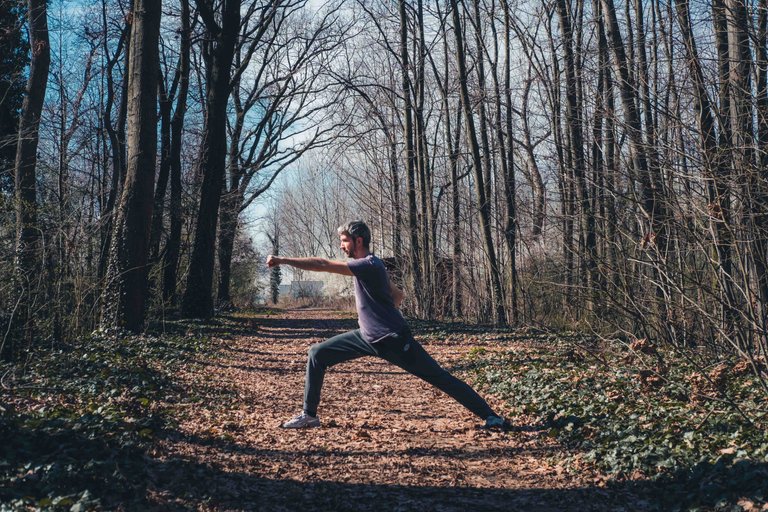
GONG BU (Bow stance) - Front leg knee must not go over the toes because that creates a lot of pressure on the joint. Ideally the knee is above the ankle. Back leg is straight at the knee, that's very important and beginners (and even those who practice for a while) tend to forget that part. Toes of the back foot point 45 degrees forward. The upper body is straight, not bend forwards or backwards. If you have your arms in a punching position like here, it is straight forward in one line with the elbow. The other fist is on the hip and facing forward.
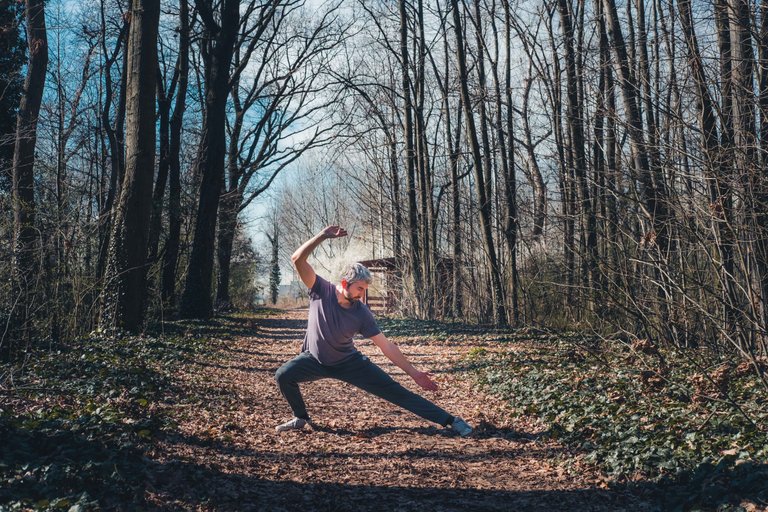
PU BU (Crouching stance) - This is the most challenging stance, for beginners as well as advanced practitioners. It is hard because you are supposed to crouch down very low, putting a lot of pressure on the legs. As you can see, the right foot goes 45 degrees in the opposite direction and it stays completely on the ground, you do not lift the heel! The knee is bent and goes in the same direction as the foot. It does not close to the inside (drop) but it's open to the side. This is important so that the injury is avoided. Front leg is straight and the foot is in the 90 degree position, also completely on the ground. This position stretches the ankle. Ideally, back is as straight as possible and not bent forward too much. Arms in the same line, one following the front foot, the other bent over the head.
In the beginning stay higher in all stances, it's more important to do them correctly then to them in low positions.
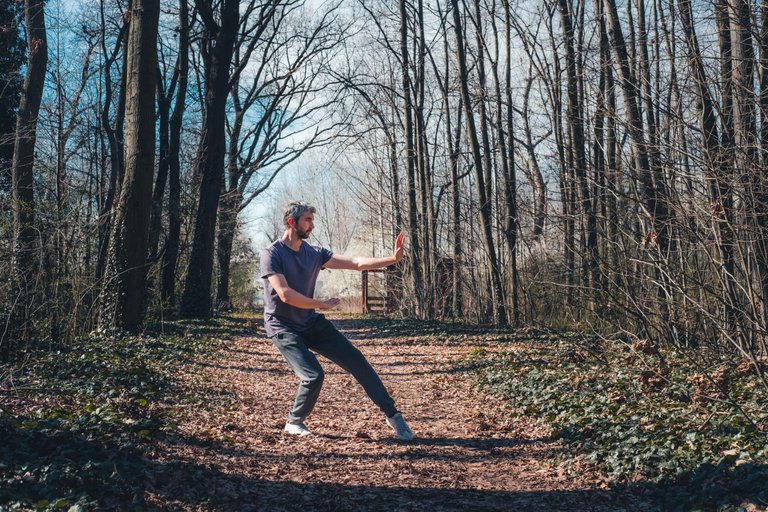
XU BU (Empty stance) - It's called empty stance because the front leg does not hold any weight at all. All the weight is on the back leg. Back knee is bent so you sit down on that leg with the back straight. Leg is slightly open, so there's a gap between two legs. Front leg is slightly bent and the toe touch the ground but hold no weight. If you left the leg up you shouldn't lose balance. As you can see, the leg is also slightly twisted to the inside. It's important that the back is straight and pelvis tilted in and not sticking out. Lower arms protects the hip while the upper is almost stretched out, pointed at the opponent and you look through the fingers.
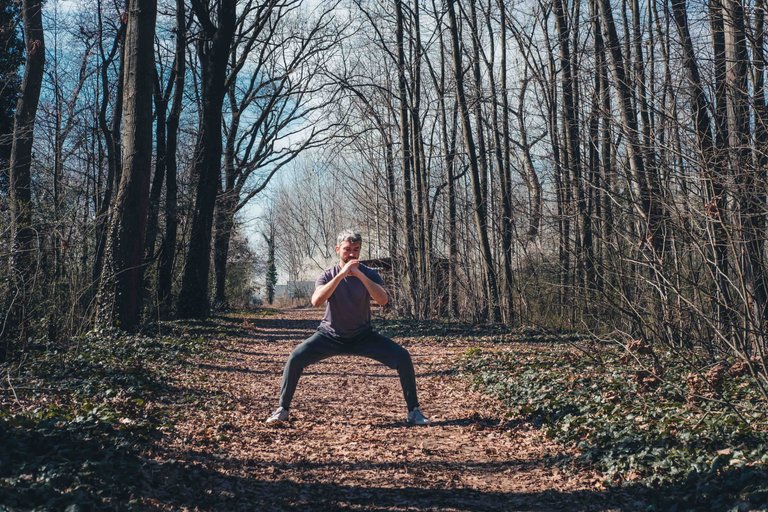
MA BU (Horse stance) - This is the single most important and used stance in Tai Chi and Kung Fu. It is another one that is very hard to do perfectly but you can always perform it in the higher position until you achieve flexibility and leg strength. Ideally it's like this: front legs are 90 degrees against the floor and the upper legs and pelvis are completely parallel to the ground. As you can see I am slightly higher so that I can manage good back position. And the back must be straight, body not bent forward, and pelvis must be tucked in, not sticking out. When you try out you'll see why this is very challenging to do. :) Feet are pointing forward or slightly to the side and knees are not going over the toes! This is another mistake every beginner makes, in order to go lower they drop the knees forward. You can place your hands in front for the balance. When just starting, keep the stance higher so you can do it the right way.
As an exercise try to sit in this position as long as you can. Maybe try 30 seconds at first and then work towards doing it for a few minutes. Another excellent variation of this would be to do it against the wall. Press your back entirely on the wall and keep the same stance - this will teach you to keep the back straight and not bent forward.
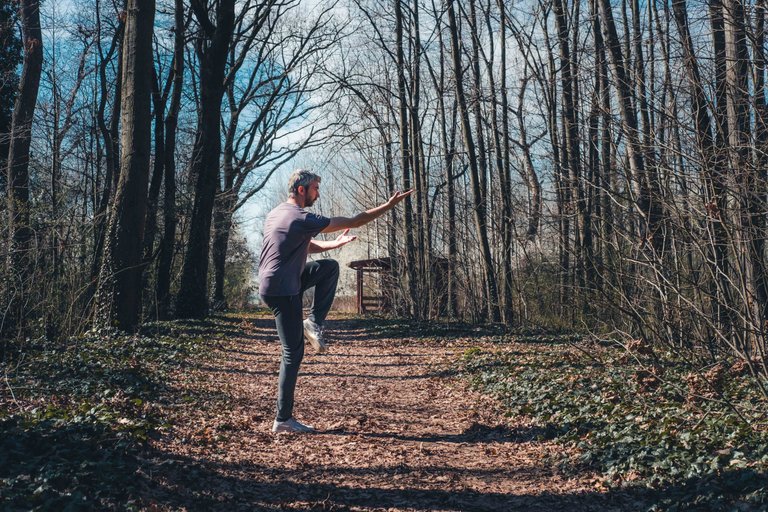
DU LI BU (Single leg stance) - Great for practicing balance. You stand on one leg, the other is bent, lifted high and the foot is guarding the knee of the other leg. The main thing is to keep bend the foot down entirely as you can see on the photo. Foot of the upper leg doesn't point forward but towards the knee. This will stretch you ankle and it might not be easy in the beginning. Opposite arm is stretched while the other hangs below the elbow, protecting it.
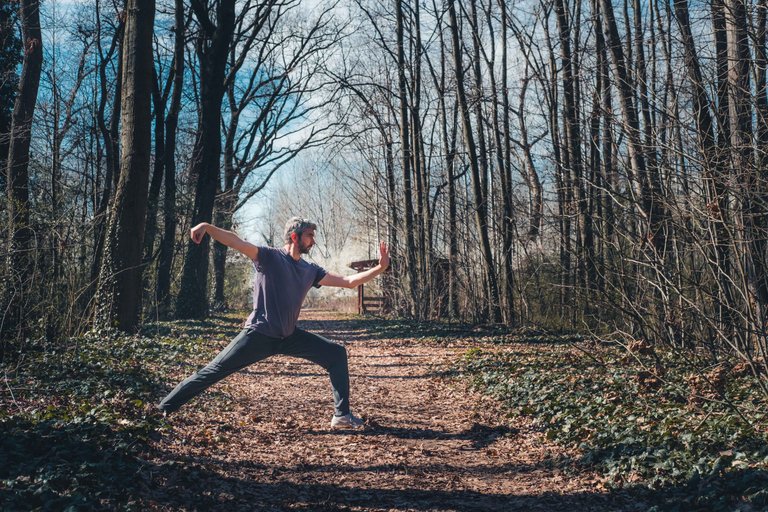
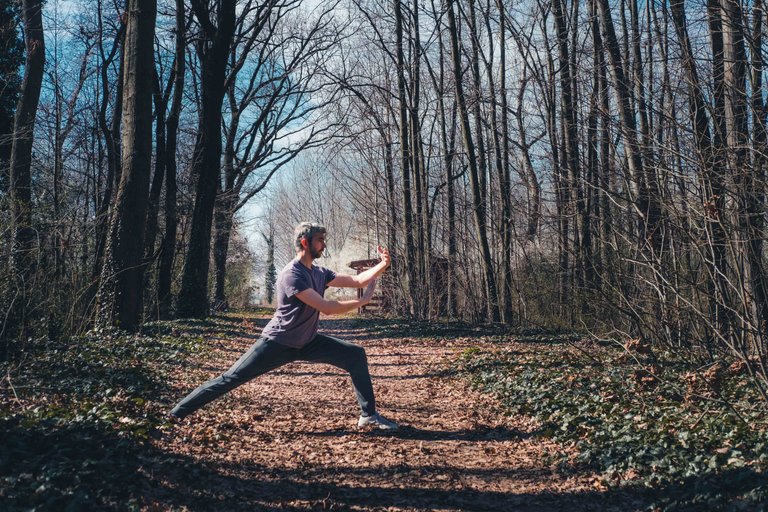
These are examples of the modifications of basic stances, particularly Gong Bu, that you can see in different Tai Chi forms and that you'll see me doing in the video demonstration below. First one is called the "Single whip" while the other is "Parting the horse mane". There are few more stances that I could talk about, especially the XIE BU, or the rest stance, but I forgot to film it so I'll explain it some other time.
Below is me doing the opening sequence of the Wudang Tai Chi 28 form. It contains 28 moves and is a short version of 108 form that is an extremely long one and takes more than half an hour to perform.
Anyway I hope you enjoy the demonstration and the description of stances. I could do a tutorial on the entire form, step by step if I see people are interested. See you in the next one. :)
Love this! Never practiced any kind of sports but I was always passionate about Kung Fu and similar ones!
You can try it. :) Tai Chi is easy to follow along and very enjoyable.
Реквизит за веџбање 😉
https://t.me/rtdocumentary_new/3695
Koristan za vežbanje snage i motorike, ne toliko kao oružje u borbi. 😄